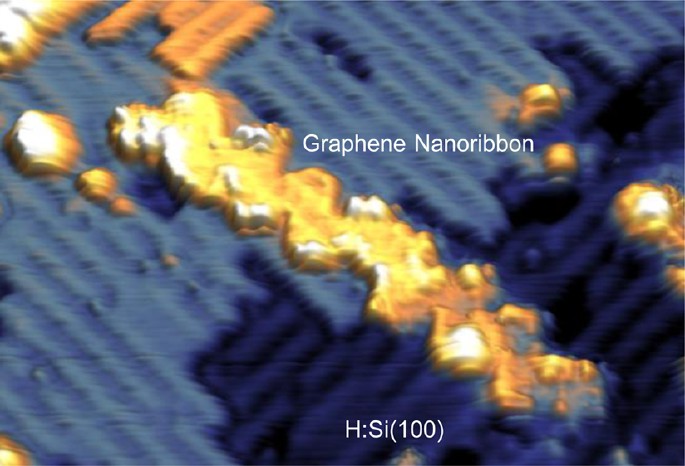With increasingly demanding miniaturization and performance requirements in the electronics industry, atomically precise graphene materials may play a significant role in high-performance computing. A previous scanning tunneling spectroscopy study published by the Lyding group in Nature Materials experimentally determined that structural details at the atomic scale have a large effect on the electronic properties of graphene nanostructures. As a result, atomic precision is required to obtain well-controlled electronic properties. Through the bottom-up approach, nanoribbons can be made with atomic precision, enabling control over their electronic structure.

Graphene nanoribbons are synthesized either on metal surfaces using molecular precursors, or synthesized in solution as demonstrated by the Sinitskii group, our collaborators at the University of Nebraska-Lincoln. Previously, several groups have shown that nanoribbons can be transferred from the metal substrates onto other substrates using wet chemical methods, but high-quality images and electronic measurements could not be obtained due to problems associated with solvent residue. Our work, published in Nano Letters (DOI: 10.1021/acs.nanolett.6b03709), shows that solution-synthesized graphene nanoribbons can be cleanly placed onto arbitrary surfaces using the dry contact transfer method which was developed in the Lyding lab.